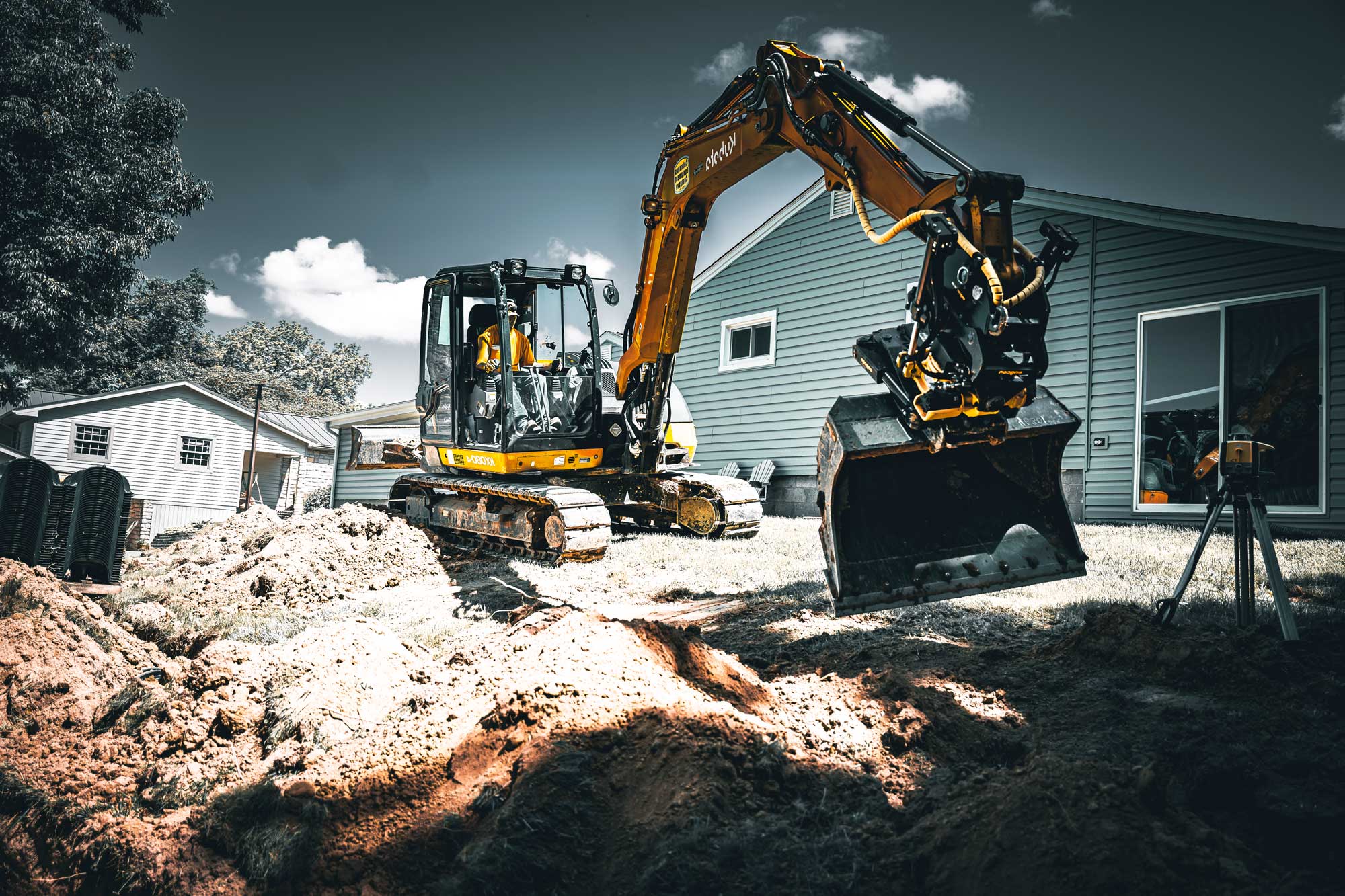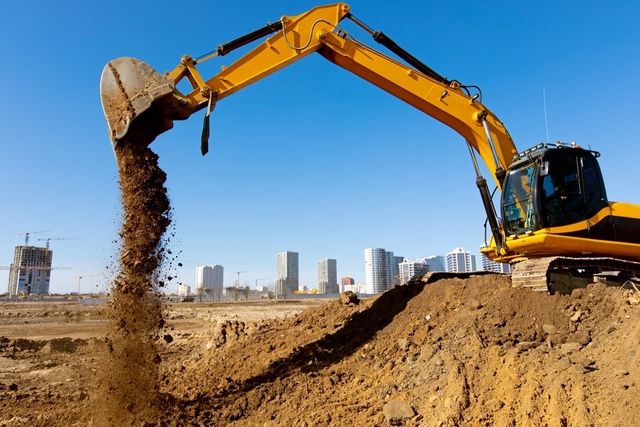Lancaster Trenching - Expert Trenching Solutions in Lancaster, Ohio
Lancaster Trenching - Expert Trenching Solutions in Lancaster, Ohio
Blog Article
Revealing the Art of Excavation: Pro Tips for Safe and Effective Digging
In the world of excavation, the mastery of productive and risk-free excavating is an art type that calls for adherence, accuracy, and knowledge to established techniques. As dirt is turned and planet is moved, the details of excavation expose themselves, demanding an eager understanding of equipment, dirt structure, security protocols, and ecological considerations. The competence required to browse these aspects efficiently can imply the difference in between a successful excavation project and a possible disaster. By unwinding the layers of this intricate process, a world of methods and insights awaits those seeking to raise their excavation abilities to new heights.
Significance of Appropriate Tools
To make certain the security and effectiveness of any type of excavation job, making use of the ideal tools is vital. Excavation projects vary in range and complexity, varying from little domestic landscaping tasks to large-scale building tasks.
These flexible makers come in various dimensions to suit various project demands. Miniature excavators are suitable for smaller sized jobs, while larger excavators tackle extra substantial projects successfully.
Excavators stand out in jobs that call for pushing big amounts of dirt or debris. By investing in the ideal equipment, excavation jobs can be finished securely, on time, and with precision.
Recognizing Dirt Make-up
An extensive grasp of soil structure is fundamental for performing excavation projects with precision and safety and security. Comprehending the different types of soil is important as it directly affects excavation techniques, devices option, and total job effectiveness.
Sand bits are the biggest and offer great water drainage yet provide little cohesion. Silt fragments are smaller than sand however larger than clay, using modest water drainage and cohesion. Clay particles are the tiniest and give high communication yet poor drainage. Organic issue, such as decomposing plant material, affects dirt fertility and security.
Before starting excavation, carrying out soil examinations to establish its structure and characteristics is vital. This information aids in choosing the ideal tools, applying precaution, and creating excavation methods tailored to the details soil problems - dump truck companies in ohio. By understanding dirt composition, excavation experts can improve project outcomes while ensuring security and adherence to best methods
Precaution and Methods
Comprehending dirt structure is the foundation upon which safety and security steps and methods for excavation projects are developed, making certain the wellness of workers and the success of the venture. There are a number of vital measures that should be applied to mitigate risks and protect against crashes. when it comes to security during excavation.
First and foremost, before any kind of digging begins, an extensive inspection of the site ought to be performed to identify any potential risks such as underground utilities, unpredictable soil conditions, or nearby structures that could position a risk. It is vital to have a skilled Extra resources person supervise the excavation process to guarantee that all security procedures are complied with purely.
In addition, all employees included in the excavation needs to be appropriately trained in secure digging techniques and the proper operation of devices. Personal protective equipment (PPE) such as difficult hats, high exposure apparel, handwear covers, and safety boots ought to be put on whatsoever times to lessen the threat of injuries. lancaster excavation. Routine security meetings and tool kit talks need to additionally be conducted to keep all workers informed concerning prospective threats and enhance secure job practices. By adhering to these precaution and procedures, excavation jobs can be completed effectively and without occurrence.
Efficient Excavation Planning
When getting started on an excavation project, meticulous preparation is vital to ensure effectiveness, safety, and effective results. Efficient excavation planning entails a number of crucial steps that are essential for the smooth implementation of the job. The initial step is to conduct a detailed site evaluation to recognize any prospective hazards, such as below ground utilities or unpredictable soil conditions. This details is essential for establishing a detailed excavation strategy that includes safety and security steps and risk reduction strategies.
As soon as the website assessment is total, the following step is to produce a clear timeline and timetable for the excavation activities. This consists of determining the series of tasks, tools requirements, and manpower allocation. Correct scheduling aids prevent hold-ups and makes sure that the job remains on track.

Furthermore, interaction among all team members is critical during the planning phase. Clear directives, regular updates, and effective sychronisation are necessary for an effective excavation job. By spending effort and time in careful preparation, excavation teams can substantially improve efficiency, decrease threats, and attain effective results.

Taking Care Of Ecological Considerations
With raising emphasis on ecological sustainability in building practices, taking care of environmental factors to consider has become a crucial element of excavation projects. Excavation tasks have the prospective to influence the surrounding environment through dirt disintegration, sediment drainage, habitat visite site disruption, and contamination of water resources. To alleviate these dangers, it is vital to apply best practices that focus on environmental security.

Moreover, appropriate waste management is essential to avoid soil and my sources water contamination. Executing procedures for the disposal of dangerous materials, recycling of waste materials, and reducing the use of damaging chemicals can substantially minimize the ecological effect of excavation jobs. By incorporating these methods into excavation planning and execution, building firms can guarantee that their jobs are not just risk-free and effective yet additionally ecologically responsible.
Conclusion
To conclude, grasping the art of excavation needs an extensive understanding of proper equipment, dirt composition, safety measures, and reliable preparation. By following these standards and thinking about environmental aspects, excavations can be carried out securely and effectively. It is important to prioritize security and productivity in every excavating project to make certain successful outcomes.
As dirt is turned and earth is relocated, the ins and outs of excavation reveal themselves, demanding a keen understanding of devices, dirt structure, safety and security procedures, and ecological considerations.To make sure the security and efficiency of any type of excavation task, using the ideal equipment is vital.A comprehensive understanding of dirt structure is basic for executing excavation jobs with accuracy and safety. Comprehending the various types of dirt is crucial as it directly affects excavation approaches, equipment choice, and overall project effectiveness. By recognizing soil composition, excavation experts can improve task results while making certain safety and adherence to finest methods.
Report this page